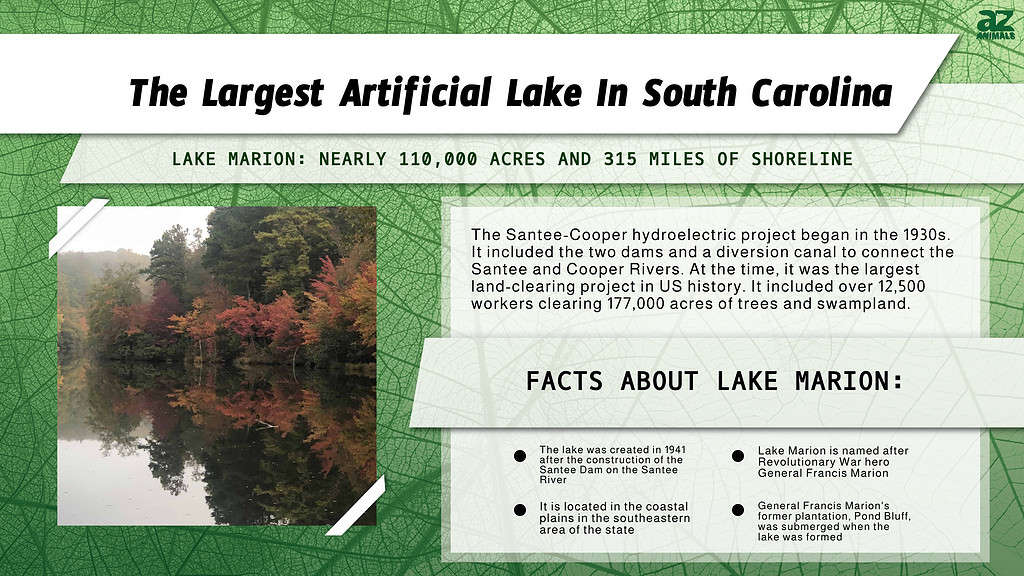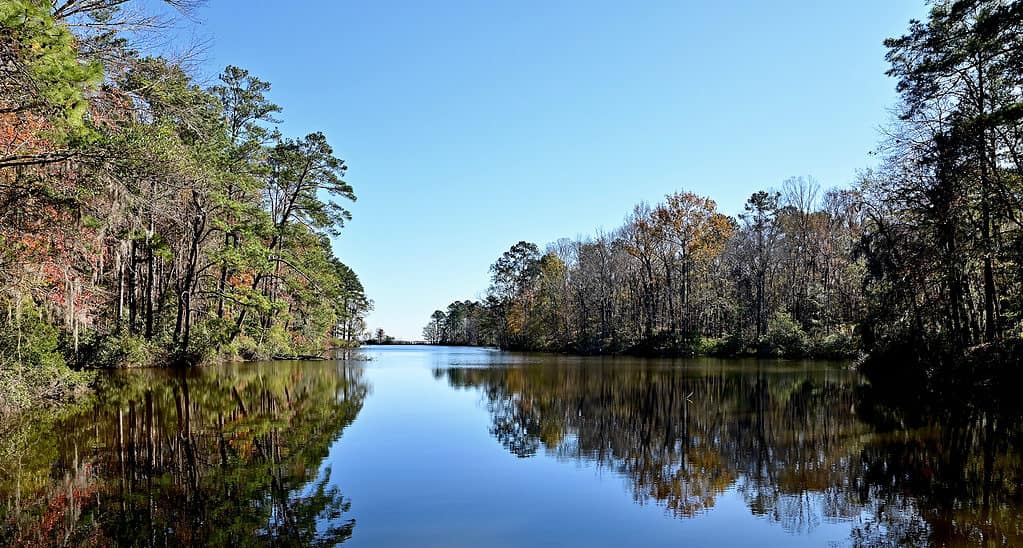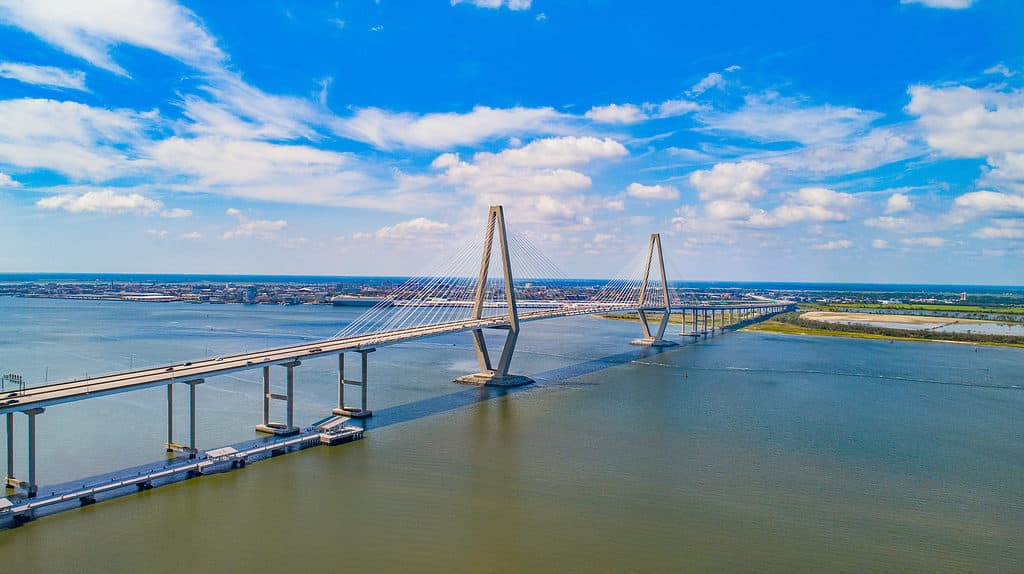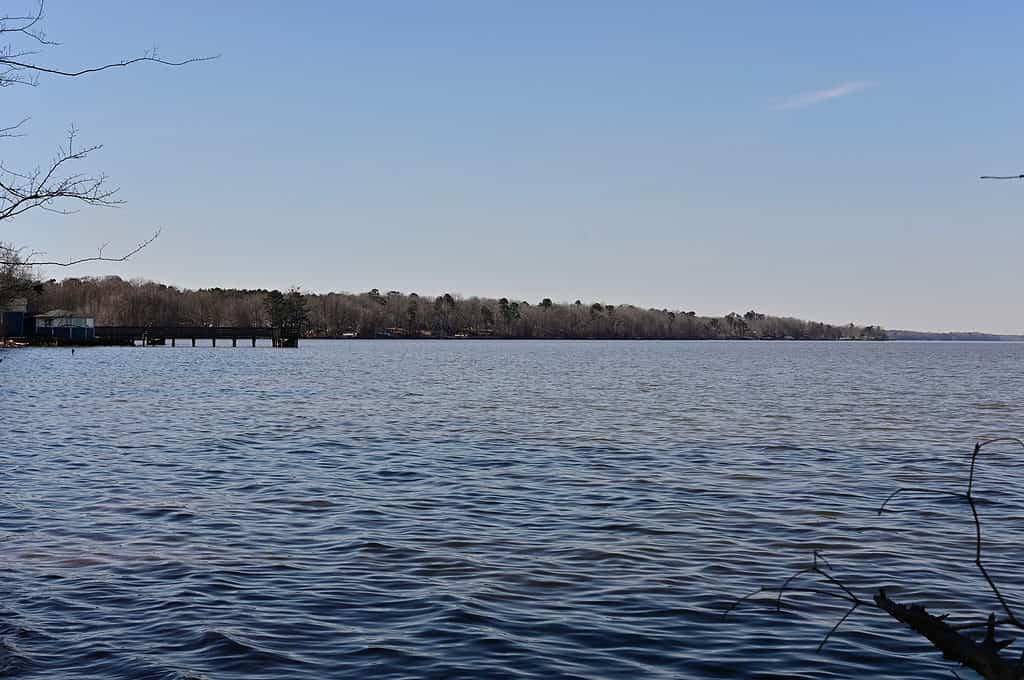South Carolina has a diverse landscape, with the Appalachian Mountains in the west and the Atlantic Ocean on the east coast. Lake Marion is the largest artificial lake in the state, covering nearly 110,000 acres and 315 miles of shoreline. It is located in the “low country,” the coastal plains in the southeastern area of the state.
The lake was created in 1941 after the construction of the Santee Dam on the Santee River and the Pinopolis Dam downstream that forms Lake Moultrie. Lake Marion is named after General Francis Marion, a Revolutionary War hero. His former plantation, Pond Bluff, was submerged when the lake was formed.

Where Is Lake Marion Located On A Map?
Lake Marion, also the largest lake in South Carolina, is centrally located within the coastal plain where it is bordered by Clarendon, Calhoun, Berkeley, Orangeburg, and Sumter counties and the towns of Santee, Manning, Summerton, Eutawville, Vance, and Elloree are all located on its waterway. South Carolina is located along the south coast of the United States and is bordered by North Carolina to the north, Georgia to the south, the Atlantic Ocean to the east, and Tennessee to the west.
How the Lake Was Made
In the 1930s, the United States was struggling with unemployment and poverty during the Great Depression. Franklin D. Roosevelt and Congress passed the “New Deal” in the 30s to help create jobs and bring the country out of the depression.
A series of regulations, financial reforms, and public works projects were enacted between 1933 and 1939. Some of these included projects to bring electricity to rural areas. The construction of hydroelectric dams, including the Santee and Pinopolis Dam, was a Work Progress Administration (WPA) project. The WPA was created in 1935 to provide jobs for the unemployed, most of which were construction-related public works projects. Over 620,000 miles of roads and over 10,000 bridges were constructed, with 8.5 million employed on WPA projects between 1935 and 1943.
The Santee-Cooper hydroelectric project began in the 1930s. It included the two dams and a diversion canal to connect the Santee and Cooper Rivers. At the time, it was the largest land-clearing project in US history. It included over 12,500 workers clearing 177,000 acres of trees and swampland.
It was also the largest earth-moving project in history. 42,000,000 cubic yards of earth were moved, and 3.1 million cubic yards of concrete were poured. The Santee Dam near Wilson’s landing, South Carolina is eight miles long and has 62 spill gates. Even though it is one of the largest of its kind, it only generates about 1.9 megawatts of electricity.
This was designed with the Pinopolis Dam generating most of the electricity. The Pinopolis Dam is 138 feet high, 11,500 long, and has five turbines that generate 116 megawatts of electricity. The dam also has the world’s highest single-lift lock. The 180-foot by 60-foot lock raises and lowers watercraft 75 feet to allow navigation between the lakes. Additional generating capacity has been added to the area over the years. In 2019, a total of 243 megawatts of electricity was generated.

Lake Marion is the largest artificial lake in South Carolina covering nearly 110,000 acres.
©C Dash/Shutterstock.com
Environmental Effects
The project diverted most of the water from the Santee River to the tiny tidal Cooper River. This virtually eliminated the lower 90 miles of the Santee River from the dam to the coast. This changed the salinity of the Cooper River into a significant freshwater river.
This considerably changed the habitat of both rivers. It affected migratory fish such as the American shad, striped bass, blueback herring, and the endangered shortnose sturgeon. In the 1980s, another canal diverted about 80% of the water from Lake Moultrie back to the Santee River. The flow from this canal depends mainly on hydroelectric generation needs, so it has not been a reliable, steady diversion.

The Santee-Cooper hydroelectric project diverted water from the Santee River changing the salinity of the Cooper River into a freshwater river.
©Kevin Ruck/Shutterstock.com
The Lake Today
Lake Marion is a famous lake for both fishermen and hunters. Even though a significant attempt was made to clear the land for the lake, not all the timber and structures were removed. Many trees, plantations, churches, and homes were submerged. This, in turn, created excellent habitats for fish, including channel catfish, blue catfish, and largemouth bass. The state records for all of these fish were caught from Lake Marion. Many waterfowl live in the area, especially in the Santee National Wildlife Refuge floodplains on the northern shore of the late.
The lake is also a popular destination for boaters, vacationers, and retirees, with many access points, boat landings, and marinas. Potato Creek Landing in Summerton, SC, is a popular spot for fishers. It is an undeveloped area near the Wildlife Refuge. Near the north end of the Dam, Randolph’s Landing is a family-owned business with boat access, a motel and campground for vacationers, and even a restaurant. For retirees, Santee Cooper Resort is a gated community outside Santee, SC. This resort is on the banks of the lake and has 300 private residences. The resort prides itself on its low traffic, beautiful views, tropical flowering plants, and private marina. It also has one of the best golf courses in the area.

Lake Marion is a popular destination for boaters, vacationers, and retirees, with many access points, boat landings, and marinas.
©C Dash/Shutterstock.com
Lake Marion is an oasis for nature lovers, and outdoors and watercraft enthusiasts. Its large area allows room for many visitors without giving up the sense of privacy and closeness to nature. At about a 1-hour drive southeast to the Atlantic coast and charm of Charleston, South Carolina, or a 1-hour drive northwest to all the amenities in the state capital of Columbia, it could be the perfect place for lake lovers to vacation or even retire.
The photo featured at the top of this post is © Creative Smile Studio/Shutterstock.com
Sources
- SC Picture Project, Available here: https://www.scpictureproject.org/berkeley-county/santee-river.html
- Hydropower Reform Coalition, Available here: https://hydroreform.org/hydro-project/santee-p-199/
- Wikipedia, Available here: https://en.wikipedia.org/wiki/Lake_Marion_(South_Carolina)
Thank you for reading! Have some feedback for us? Contact the AZ Animals editorial team.






